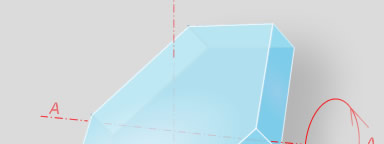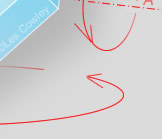
OPOD
What's New
Rays & Shadows
Water Droplets
Rainbows
Ice Halos
Contents
Crystals
Crystals & Halos
Columns & Plates
Orientations
Plate
Column
Parry
Lowitz
Random
Face numbers
Real Crystals
Diamond Dust
Pyramidal
Frequent Halos
Infrequent Halos
Multiple Displays
Other Worlds
Observing Halos
HaloSim
High Atmosphere
Links & Resources
Search - Index
123456789012345678
| Lowitz Oriented Crystals |
|
Lowitz oriented plates or columns take rotational positions - they don’t necessarily spin - about a near horizontal Lowitz axis ‘AA’. The axis passes through two opposite prism edges and is parallel to the hexagonal end faces. The orientation and its halo arcs are named after Tobias Lowitz who first reported them in 1790. Their existence was long doubted but the halos are now occasionally observed and digitally photographed although clear examples remain very rare. Crystals with the classic Lowitz orientation take all positions about the axis LL. In practice, the crystals may have a more restricted range of angular positions. Rays can pass through two side faces with
a wedge angle of 60° in
three ways to form upper, middle and lower Lowitz
arcs. Rays
internally reflected from end faces form reflected Lowitz arcs,
long pillar like extensions from the parhelia when the sun is
very low. |
||||||||||
 |
 |
|
| Lowitz arcs | Middle Lowitz arc |
|


